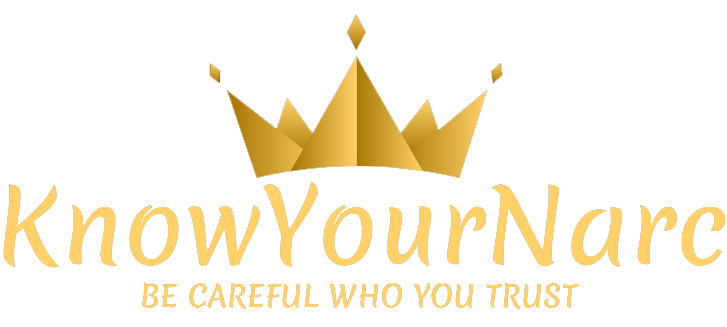Growing up with a narcissist is like living in a world where love feels conditional, and your sense of self constantly shifts to fit someone else’s needs. For years, I struggled to find my voice amid the chaos of manipulation, unrealistic expectations, and emotional rollercoasters. This is my story—a journey through the tangled memories of childhood shaped by narcissism, and the long path toward healing and reclaiming my identity. If you’ve ever felt lost in the shadow of someone’s overwhelming ego, I hope my experience offers a glimmer of understanding and hope.
Table of Contents
- Understanding the Emotional Impact of Growing Up with a Narcissistic Parent
- Recognizing the Patterns that Shaped My Childhood Reality
- Steps I Took to Reclaim My Identity and Build Healthy Boundaries
- Practical Strategies for Healing and Rediscovering Self-Worth
- Final Thoughts
Understanding the Emotional Impact of Growing Up with a Narcissistic Parent
Living in the shadow of a narcissistic parent often means navigating a kaleidoscope of conflicting emotions that can leave you feeling invisibly trapped. The constant need to walk on eggshells, seeking validation yet never quite receiving genuine affection, weighs heavily on a child’s developing heart. Self-doubt becomes a constant companion, and the line between reality and the distorted reflections cast by the parent’s ego blurs. You learn early on to suppress your own needs, masking your true feelings to avoid triggering the inevitable emotional outbursts or disappointments. This relentless emotional turbulence doesn’t just shape childhood; it seeps into adulthood, coloring how you relate to yourself and others.
The emotional scars inflicted by such upbringing manifest in many subtle ways. You might find yourself struggling with trust, second-guessing every intention in relationships, or battling the fear of abandonment. The narcissistic parent’s unyielding demand for admiration can leave you perpetually seeking approval, often neglecting your own voice. Healing involves unpacking this complex emotional baggage:
- Recognizing and validating your own feelings as legitimate and important
- Setting boundaries to protect your emotional well-being
- Rebuilding self-esteem independent of external validation
- Learning to identify and challenge the internalized critical voice
Embracing your emotional truth is the first step toward reclaiming your narrative and forging a path toward genuine healing.
Recognizing the Patterns that Shaped My Childhood Reality
Looking back, the subtle threads that wove my childhood fabric were anything but ordinary. There was an undercurrent of constant performance—a need to anticipate and meet impossible standards set not by love, but by control and validation seeking. I learned early that my feelings were negotiable, my successes were currency, and my mistakes were magnified reflections of someone else’s fragility. This intricate dance of emotional manipulation was masked by charm and manipulation, leaving me to wonder if my reality was simply a distorted mirror held up by someone unable to face their own reflection.
Through the fog of confusion and self-doubt, I started to map the patterns that dictated my every move in that household. These patterns, now crystal clear, included:
- Gaslighting: Moments where my perception was intentionally twisted until I questioned my own sanity.
- Conditional affection: Love doled out based on compliance and achievement rather than inherent worth.
- Silent withholding: Punishments that came not through words but through absence and cold indifference.
Recognizing these recurring dynamics was the first pivotal step in untangling the narrative I’d been handed—a narrative that was not mine to own. Each pattern acknowledged was a brick removed from the walls that confined my spirit, clearing space for healing and reclaiming my authentic self.
Steps I Took to Reclaim My Identity and Build Healthy Boundaries
Reclaiming my sense of self began with a radical act of self-awareness. I started by identifying the patterns and behaviors that had been ingrained in me by years of living in someone else’s shadow. This meant peeling back layers of guilt and self-doubt that had defined my every choice. Journaling daily became an essential tool—it helped me recognize when I was reacting out of old wounds rather than authentic feelings. Surrounding myself with supportive people who respected my needs was equally transformative. Their encouragement gave me the courage to say “no” without feeling selfish, a word that had haunted me for most of my life.
Building healthy boundaries wasn’t an overnight process; it was a constant practice of tuning into my own emotional and physical limits. I learned to communicate with clarity and firmness, even when it felt uncomfortable. Here are a few steps that guided me:
- Recognizing Manipulative Tactics: Understanding when others tried to control or guilt-trip me.
- Setting Clear Limits: Deciding what I would and wouldn’t tolerate in relationships.
- Practicing Assertiveness: Using “I” statements and staying grounded in my truth.
- Enforcing Consequences: Walking away when boundaries were crossed repeatedly.
Each boundary I established stitched me closer to my authentic identity, teaching me that protection isn’t about building walls, but about creating safe spaces for growth and healing.
Practical Strategies for Healing and Rediscovering Self-Worth
Healing from the deep-rooted wounds left by a narcissistic upbringing requires intentional and nurturing steps. Start by setting clear emotional boundaries—understand that your feelings and needs are valid and deserve respect. This may mean limiting contact or creating physical distance from those who continue to undermine your growth. Engage in self-compassion practices daily; simple affirmations like “I am enough” and “My worth is not defined by others” can gradually rewire the negative self-talk ingrained over years. Journaling your experiences and emotions without judgment offers a safe space to untangle complex feelings and reclaim your narrative.
Additionally, surrounding yourself with supportive communities—whether through therapy groups, trusted friends, or online forums—can be transformational. These connections provide validation and encouragement, reminding you that healing is neither linear nor shameful. Incorporate creative outlets such as art, writing, or movement to express parts of yourself that may have been suppressed. Remember, rediscovering your self-worth is a personal journey that blossoms when you honor your authentic self and nurture your emotional well-being consistently.
Final Thoughts
Thank you for joining me on this deeply personal journey through my childhood with a narcissistic parent. Healing from such an experience isn’t linear, and it’s definitely not easy, but sharing my story has been a crucial step toward reclaiming my voice and my peace. If you’re reading this and see parts of your own story reflected here, know that you’re not alone—and that healing is possible. Together, by acknowledging our past and embracing self-compassion, we can rewrite our narratives and create brighter, empowered futures. Here’s to growth, resilience, and finding light after the shadows.

